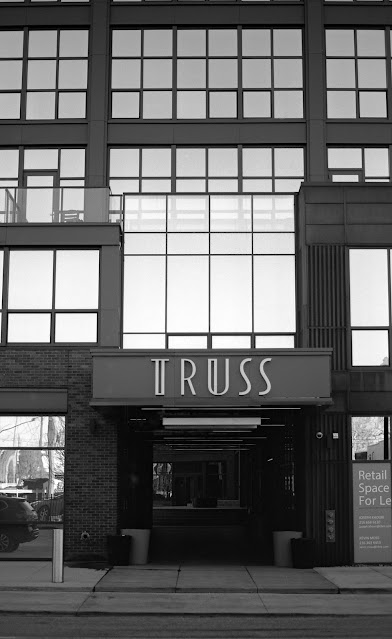While there are a lot of exotic emulsions that are available for 35mm, there are significantly fewer options for 120 film. So, imagine my surprise when I saw a 120 film that’s NOT available in 35mm. The Film Photography Project has recently released FPP X-RAY 120 film that is a 100 ISO high-contrast orthochromatic film that can be developed in typical black and white chemicals.
I really didn’t know what to think when I first realized that it was called an X-ray film, as I am used to seeing films sold as sheet film - and with the other oddball things like some x-ray films being coated on both sides, and of very low ISO ratings. This IS NOT one of those films. For one, it’s on a PET base, and has a recommended ISO of 100, though I have seen where it could be rated up to 400 with decent results. Second, like other X-ray films, it’s orthochromatic, and is insensitive to red light, so you could develop it under a red safelight. It has no anti-halation layer, so it’s best to load the film in subdued light, or you might get light piping.
 |
| Zeiss Ikon Box Tengor |
I’m game for oddball films, and I had no preconceived notions about this film. I loaded one roll into a Zeiss Ikon Box Tengor 56 box camera, and the other roll into my Yashicamat 124. The choice to use it in the box camera was a spur of the moment thing, when I was out having a beer or two with my friend Bill Pivetta. Maybe a bad idea, but as you’ll see, maybe not.
The Yashicamat is a camera that would be a good test for this film, since I have excellent control over my exposures. I rated the film at ISO 100, and used the TLR’s built-in meter. I shot most of that roll at an Asheville camera group meetup on April 16, and that was a better test of this film.
I developed both rolls in D-96 for 6.5 minutes at 20°C, and probably 6 minutes would have been just fine, as well. I was just aiming for what I thought might be a good well-developed negative, given that the instructions read 6 min in D-76.
Results
Zeiss Ikon Box Tengor
 |
| Beach Volleyball at the Highland Brewery meadow |
 |
| Great mural in West Asheville, featuring Dolly and RuPaul |
The results from the Box Tengor were actually pretty good, though some of the shots were overexposed. There’s also a bit of "blooming"in some of those images, because of the uncoated lens, as well as the overexposure. I picked two of the best 6x9 cm negatives.
Yashicamat 124
 |
| That's Reuben's Yashicamat 124. |
 |
| Thanks for posing, Emily! |
Luckily, Emily stopped by at our meeting, and while she’s a photographer, she is also an art model, so she posed for a few shots at the Wedge Brewery, and I was able to test the remainder of the roll of the X-ray film under somewhat cloudy bright conditions.
 |
| Over near Craggy Gardens off the Blue Ridge Parkway |
The results from the Yashicamat were very good, and it’s obvious that the film is very fine-grained, with great tonal range -- and orthochromatic, as reds are very dark. The detail was excellent. I need to buy some more rolls of this film and really test it with different lighting situations and subjects.
Overall, I think this a film with the potential to create some very interesting images. I love the packaging from the FPP (which of course has nothing to do with selecting this film!), and the film has edge markings for frame numbers. The backing paper has very easily seen black markings on a white background, so for those of you that use a red window to line up your exposures, it will be easy to line up to the proper spot for each exposure. I think this might be a fun film to use in a Holga on a sunny day. For the Box Tengor, the shutter speed is about 1/30 sec, which in full sun, even at f/16, would be overexposed by two stops. You can’t use a red filter, because it’s an ortho film. A neutral density gel would possibly work well with a simple box camera in full sun.













































